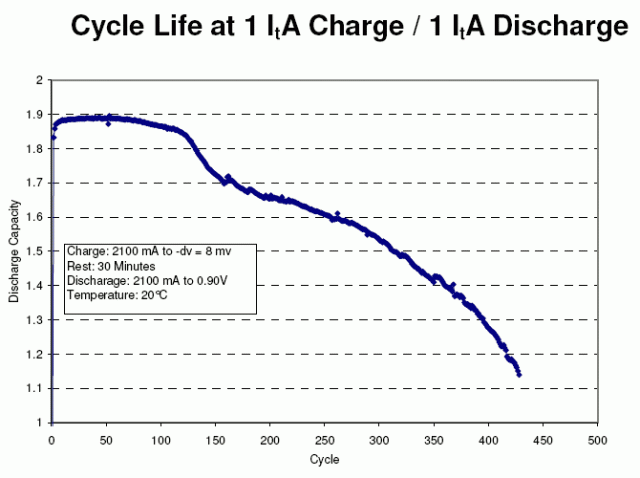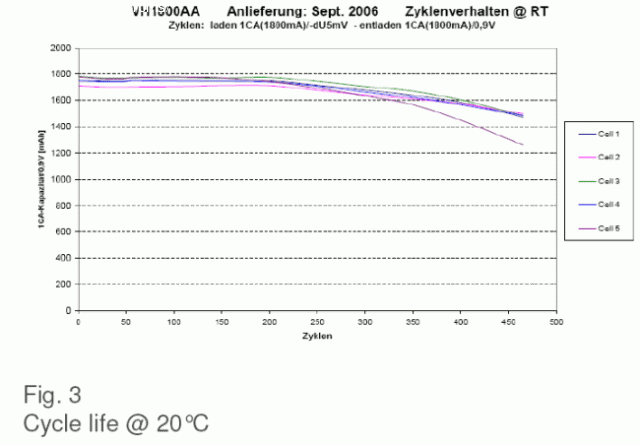New Batteries to come (in addition to AAA GP950 / 1000 and Varta 1000mAh, and AA Uniross 2500):
-Yuasa 2700mAh (made in china)
-Energizer 2650
-Sanyo 2700 (true or false I do not know), it will be those of vincebdx
Accus out of the race (summary):
-Varta Photo 2500mAh No. 1 after 115 cycles (980mAh capacity), cause charge considered HS (less than 60% of nominal capacity)
-Varta Photo 2500mAh 2 number after 108 cycles (1026mAh capacity), same
-Varta Professional 2700 n ° 1 after 76 cycles (capacity 2348mAh), plastic cause all melted, and also after that as soon as one tries to charge them they "disconnect" as would do Varta 15 ".
-Varta Professional 2700 No. 2 after 105 cycles (1851mAh capacity), same reasons
-Sony stamina 2500mAh n ° 1 after 140 cycles (1568mAh), because the charger refused them (internal resistance too high), and capacity <60% C nominal
-Sony stamina 2500mAh No. 2 after 118 cycles (1370mAh), same reasons.
-Microbatt Vvpow 800mAh after 96 cycles (713mAh), because the charger refused it regardless of the charging current (internal resistance too high)
-Lacrosse AAA 700mAh after 161 cycles (646mAh). It could have gone on for a long time but the deltaV is messy and the loader does not detect anything anymore at 500mA. The battery was overloaded, it took over 8500mAh before I noticed it. Its capacity is still good but its end of charge is no longer detected. Like what the Lacrosse batteries are finally not so shitty ... Load currents 500mA and discharge 400mA for this battery (did not support the load 700mA)
-Camelion "1100", after 105 cycles (807mAh) Refused by the charger, internal resistance too high.
For the moment I can say that Microbatt batteries should be avoided (at least the "general public" models ... the others of the pack are sometimes refused by the charger for too high internal resistance, however they only have a few cycles. .. and in addition they are expensive!
And the Varta of course







